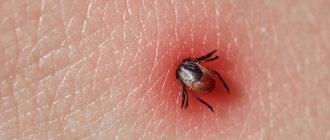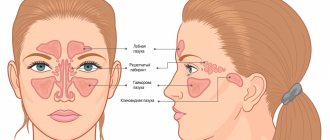The causative agent of chickenpox belongs to the ubiquitous but small family of herpes viruses. All members of the family cause skin lesions in herpes simplex and genital, cytomegalovirus infection and herpes zoster. All of them, and chicken pox is no exception, begin penetration from the mucous membranes, and then hide in the nervous tissue for the rest of a person’s life, coming to the surface in the form of herpetic eruptions.
Our expert in this field:
Nagibina Margarita Vasilievna
Infectious disease doctor, doctor of medical sciences, professor
Call the doctor Reviews about the doctor
How and why does chickenpox get infected?
The source of the disease is a sick person during the period of rash formation. It is not necessary to meet the patient himself; it is enough to get a drop of saliva with a live virus floating in the air when coughing or talking.
The cause of the disease is the entry of the chickenpox virus into the mucous membrane of the upper respiratory tract, where it immediately penetrates into the epithelial cell, multiplies and travels through the bloodstream to the lymph nodes, and then throughout the body.
How to properly care for a sick child?
This virus is very contagious , so first of all it is necessary to isolate the child from healthy brothers and sisters. During an exacerbation, do not walk. In this case it is necessary:
- constantly ventilate the room in which the child is located;
- try to distract the child from itching with games, reading books, etc.;
- dress the child in light clothes made of cotton and other natural fabrics to avoid the “greenhouse effect”;
- change bedding more often.
To reduce itching and relieve inflammation, you need to wash your child - give him a cool bath with herbal infusions. It is necessary to exclude hot, hard, spicy foods and foods that are potential allergens from the diet. If the child does not want to eat, offer him milk or tea with herbs. The diet should be light - pureed vegetables and fruits, soups, fermented milk products.
How to detect chickenpox virus?
Most people experience chickenpox in kindergarten; susceptibility to the infectious agent is almost 96%, so chickenpox in adults is very rare, and its course is mostly atypical. The symptoms are either too pronounced or almost not expressed, but not the classic version.
The infection is often mistaken for an allergic reaction; when no blisters appear, the process stops at the speckled stage. Often the symptoms of severe intoxication come to the fore, while the rash is barely noticeable. The general reaction is aggravated by concomitant chronic diseases and age-related decrease in immunity.
Infectious diseases specialists at the international clinic Medica24 will diagnose the pathology and help you cope with symptoms that worsen your quality of life.
The time from infection to the appearance of the first symptoms of the disease takes 10–21 days, but more often it takes 2 weeks.
The disease begins acutely, and the onset—the prodromal period—takes about two days. There are no characteristic symptoms at the onset of chickenpox, just intoxication. But in every third adult, the disease begins with severe symptoms: fever, headache, nausea, abdominal and lower back pain.
In some cases, the first symptoms of chickenpox may be catarrhal symptoms: sore throat, runny nose and dry cough.
Varicella Zoster encephalitis
Varicella Zoster virus (VZV), or human herpesvirus type 3, is the causative agent of chickenpox, an extremely contagious infection common in childhood patients, and herpes zoster.
After the first “meeting” with the virus and recovery from chickenpox, the virus can enter a latent state, hiding in the nerve cells of the dorsal horns of the spinal cord, cranial nerves or ganglia of the autonomic nervous system. Decades after the initial contact, its activation may occur, accompanied by axonal transport of viral particles and their subsequent exit beyond the nerve cells. CNS lesions can occur both during primary infection and during its reactivation. The most common complications of the nervous system are cerebellitis and encephalitis. Less common are meningitis, Ramsay-Hunt syndrome (herpetic ganglionitis of the geniculate ganglion), myelitis, transverse myelitis and vasculopathies. For a long time it was believed that VZV cerebellitis was based on an autoimmune process, but recently data has emerged on the direct neurotropic damaging effect of the virus. Neurological complications rarely accompany chickenpox in healthy children and are the prerogative of elderly and immunocompromised patients (however, it is worth considering the higher incidence in childhood). CNS symptoms usually accompany skin rashes, but may also precede the latter or occur in the absence of a rash (some authors consider it mandatory to screen all patients with encephalitis or meningoencephalitis and immunosuppression for markers of VZV infection, regardless of the presence of skin rashes). In cases where lesions of the central nervous system complicate the course of chickenpox in a child, the early (especially before the appearance of rashes) development of encephalitis is considered a predictor of an extremely unfavorable prognosis. In recent years, some studies have identified VZV as the second most common cause of encephalitis after HSV in Western countries. The incidence of complications according to various studies ranged from 0.5–1.5 per 1000 cases of the disease. Chickenpox (especially in children) is often complicated by cerebellitis, manifested by atactic symptoms, nausea and vomiting; They are characterized by an acute onset of symptoms within (on average) about 1 week after the first rash. Encephalitis is less common and is limited in nature. Infectious lesions associated with herpes zoster most often occur in the form of encephalitis, peripheral nerve damage, myelitis, and eye damage (acute retinal necrosis). The most common clinical manifestations of encephalitis are: symptoms of depression of consciousness of varying degrees, focal neurological symptoms; seizures are not as common. In immunocompromised (usually AIDS) patients, encephalitis complicates the course of herpes zoster and is often diffuse in nature. In recent years, researchers have focused on studying vasculopathy caused by VZV - necrotizing granulomatous arteritis of cerebral vessels.
Vasculopathy and encephalitis in VZV infection of the central nervous system go “hand in hand”; in fact, isolated inflammation of the brain parenchyma is extremely rare. In treated patients (in studies involving mainly adult patients), mortality reached 9–20%. The diagnosis of VZV CNS lesions is confirmed by PCR of the cerebrospinal fluid, but the latter may be less specific compared to HSV encephalitis. In treatment, the most effective is the intravenous use of acyclovir in maximum dosages; a specific immunoglobulin against VZV (zostevir) is also used. Radiation manifestations of VZV encephalitis are extremely similar to those of HSV encephalitis. It is worth recalling that establishing the etiology of the disease based on imaging data is impossible. More characteristic signs of VZV infection include:
- local nature of the lesion
- vasculopathy (and as a consequence, areas of ischemia of the brain parenchyma)
CT
- the affected areas are manifested by a mild decrease in the density of the brain parenchyma;
- It is difficult to talk about the characteristic localization; the frontal and temporal lobes are most often affected;
- the basal ganglia may be involved.
- CT angiography reveals areas of narrowing of the lumen of blood vessels, up to the appearance of the “string of beads” symptom
MRI
- high T2WI and FLAIR signal from the affected areas.
- MR angiographic findings are similar to CT angiography.
- areas of hemorrhage, manifested by a “loss” of signal on SWI and an increase on T1WI, are quite rare
Picture 1
(A) Time-of-flight MR angiogram demonstrates widening of the left (short arrow) and luminal occlusion of the right (long arrow) anterior cerebral arteries (B) MR scan of the brain reveals multiple hyperintense areas in both hemispheres, mainly localized in the white and gray border and white matter (arrows). (C) Using a DWI sequence, diffusion restriction (consistent with ischemia) is identified in the thalamus, hypothalamus, and right posterior internal capsule (arrow). A week later, the patient developed a pattern of hemiplegia. (D) Macroscopic changes in a patient who died as a result of chronic vasculopathy. Ovoid form with multiple areas of ischemia and demyelination.
DWI/ADC
- moderate restriction of diffusion in areas of cytotoxic edema and
- ischemic zones are manifested by pronounced diffusion limitation.
There is no specific pattern of contrast agent accumulation in both CT and MRI studies.
Radiation signs of cerebellitis
- diffuse enlargement of the cerebellum, which can lead to occlusive hydrocephalus
- local or diffuse areas of increased signal on T2WI and FLAIR
- restricted diffusion as a manifestation of cytotoxic edema
Figure 2. 6-year-old boy with VZV vasculopathy/encephalitis.
Coronal T2WI shows hyperintense areas of infarcts in the left striatal nucleus.
Figure 3. A 9-year-old boy with cerebellitis, which complicated chickenpox.
On a sagittal FLAIR tomogram, the cerebellum appears diffusely enlarged, pushing brainstem structures anteriorly.
Sources
- Nagel MA et al. The varicella zoster virus vasculopathies: clinical, CSF, imaging, and virologic features //Neurology. - 2008. - T. 70. - No. 11. - pp. 853-860.
- Nagel MA et al. Varicella zoster virus vasculopathy Analysis of virus-infected arteries //Neurology. - 2011. - S. WNL. 0b013e3182267bfa.
- Gilden D. et al. Varicella zoster virus vasculopathies: diverse clinical manifestations, laboratory features, pathogenesis, and treatment //The Lancet Neurology. - 2009. - T. 8. - No. 8. - pp. 731-740.
- Darling CF et al. MR and CT imaging patterns in post-varicella encephalitis //Pediatric radiology. - 1995. - T. 25. - No. 4. - pp. 241-244.
- Soares BP, Provenzale JM Imaging of herpesvirus infections of the CNS //American Journal of Roentgenology. - 2021. - T. 206. - No. 1. - pp. 39-48.
- Skripchenko N.V. et al. Modern features of chickenpox encephalitis in children // Journal of Infectology. - 2014. - T. 1. - No. 4. - pp. 36-43.
The most characteristic symptom of chickenpox
This is a rash that appears on non-inflamed skin. First, a rapidly growing spot appears, its middle gradually rises, and a bubble grows in it, like a drop of dew. The liquid in it soon becomes cloudy, and already on the 3rd day a crust forms. Bubbles of different sizes, from a point to a centimeter. The bubble will not necessarily grow; it may remain in the speck stage.
New bubbles appear in several stages, no more than four such waves with a break of a day or two, and for about a week they regularly “sprinkle” with new ones. The entire period of the rash takes no more than 3 weeks, during the third week crusts mainly form. There are no scars left.
Where can chickenpox rash appear?
First on the torso and limbs, but not on the palms and feet, and then on the face and head. It also happens in the mouth, causing pain when chewing and salivation; the blisters easily open, forming erosions that heal in 3 days. Blisters also appear on the mucous membrane of the genital organs. Papules also grow in the eye and are tolerated quite easily; the vesicle quickly opens, forming an ulcer that goes away without a trace in a couple of days.
At the international clinic Medica24, examinations are carried out using high-precision equipment, which allows you to quickly make the correct diagnosis and begin treatment without delay.
What other symptoms occur with chickenpox?
When a rash forms, the temperature rises, the rash comes in waves and the fever also comes in waves, but the temperature rarely lasts more than 5 days. With an extremely profuse rash, high fever and drowsiness, convulsions and loss of consciousness are possible. The rash, of course, itches a lot.
In almost half of the cases, the lymph nodes on the neck and submandibular areas are enlarged, which almost never occurs in children. The well-being of adults suffers more significantly than that of children, and the severity of clinical manifestations is more intense.
Symptoms
The incubation period is usually 14-16 (10-21) days. After chickenpox, the virus remains in the sensory nerve ganglia, where it can later reactivate and cause herpes zoster. Symptoms of chickenpox appear as an itchy, vesicular rash, usually starting on the face and upper torso and initially accompanied by fever and general malaise. The presence of a vesicular rash on the scalp is a characteristic symptom of chickenpox. The elements of the rash look like small (several millimeters in diameter) blisters rising above the reddened surface of the skin, filled with a clear liquid (which contains the chickenpox virus). As the rash gradually spreads to the body and limbs, the first blisters (vesicles) dry out. Usually all crusts disappear after 7-10 days.
Complications after an illness
Although varicella (chickenpox) is a relatively benign childhood disease and is rarely considered a significant public health problem, the course of the disease can sometimes be complicated by pneumonia or encephalitis caused by the VZV virus, which can lead to lasting effects or death. The most dangerous are bullous, hemorrhagic or gangrenous forms of chickenpox. Disfiguring scars may result from secondary infection of the vesicles; in addition, necrotizing fasciitis or sepsis may occur as a result of such infection.
Complications of chickenpox are recorded with a frequency of 5-6%, they serve as a reason for hospitalization in 0.3-0.5% of patients. Of the total number of cases, this is several thousand per year. 30% of complications are neurological, 20% are pneumonia and bronchitis, 45% are local complications (for example, streptaderma), accompanied by the formation of scars on the skin.
Other serious manifestations include pneumonia (more common in adults), rarely congenital varicella syndrome (caused by chickenpox contracted during the first 20 weeks of pregnancy) and perinatal varicella in newborns whose mothers develop chickenpox between 5 days before and 48 hours after. childbirth In patients with immunodeficiencies, including HIV infection, chickenpox is severe. Severe chickenpox and death may also occur in children taking steroid hormones for asthma. In general, complications and deaths from chickenpox are more common in adults than in children.
In 10-20% of those who have recovered from the disease, the varicella zoster virus remains in the nerve ganglia for life and subsequently causes another disease that can manifest itself at an older age - herpes zoster or herpes zoster. Herpes zoster is characterized by prolonged and painful neuralgic pain, and also has a number of complications in the form of damage to the nervous system and internal organs - paralysis, visual impairment. People with herpes zoster can be a source of chickenpox infection.
How does the infection usually progress?
Mild course with a few rashes, normal temperature or briefly rising to 38°C, blisters disappear within 3 days.
During a moderate infection with a temperature of up to 39°C, abundant skin formations disappear within 5 days.
Severe chickenpox is observed in patients weakened by chronic diseases; a fresh rash lasts for almost a week; the condition is severe with severe symptoms of intoxication.
If your condition worsens, you must immediately contact an infectious disease specialist, who is available seven days a week and on holidays at the international clinic Medica24. Registration is carried out 24 hours a day by telephone. Early initiation of special therapy will avoid irreparable consequences.
Treatment
Chickenpox usually goes away in 7-10 days . The main action during therapy is treatment of the rash to prevent suppuration. Brilliant greens, potassium permanganate, etc. are suitable for this. To relieve unpleasant symptoms, the child may be prescribed antihistamines and antipyretics.
During the course of the illness, it is not recommended to use a washcloth and soap. Dress your child only in soft cotton clothes to reduce itching and the likelihood of rupture of the blisters.
Throughout the entire period of illness, the child is isolated at home, in the children's room. A kindergarten or school is quarantined for three weeks.
How else can the infection proceed?
Atypical forms are more common in adults. Thus, when treating an adult who has been in contact with a patient with immunoglobulin, which is practiced when there is an absolute probability of developing the disease, the symptoms of chickenpox are almost not expressed and this option is called erased.
In patients with severe chronic processes, tumors or after a transplant, on the contrary, severe forms develop like gangrene of the vesicles, with huge blisters - bullous, hemorrhagic with hemorrhages in the vesicles - in blood diseases. The generalized form is very difficult, when a rash forms even in the internal organs.
Take care of yourself, book a consultation now
Message sent!
expect a call, we will contact you shortly
What is a complication of the disease?
It is necessary to distinguish between complications of the disease, severe course of the disease and its atypical forms.
According to the definition, a complication of a disease is a pathological process added to the main disease, aggravating the typical course of the disease and caused not by its cause, but by additional changes that occurred in the body during the course of the disease. Complications do not always develop, but can be significantly more severe than the underlying disease[2].
Chickenpox and its complications. Photo - Lori's photo bank
Among the complications of chickenpox, the most common are purulent skin lesions - boils, abscesses and others. Viral pneumonia, which is the most common complication in adults, is severe, and the most dangerous complication of this infection from the nervous system is damage to the brain - encephalitis - or its membranes - meningitis[3].
When is a patient considered cured?
Not until he feels himself recovering, but according to medical criteria:
- The patient should not have a skin rash and the mucous membranes should also be clean.
- There are no signs of intoxication.
- The temperature should be normal for at least three days.
- Blood test without abnormalities.
Most suffer from chickenpox in childhood; in adults, the infection is much more severe than in children, who feel well and are active even during the heyday of the disease.
The international clinic Medica24 uses the most effective domestic and foreign therapy methods, which can significantly improve the quality of life of our patients and maintain their activity. Get help from a specialist from our medical center by calling +7 (495) 230-00-01
The cause of the development of chickenpox is a virus from a small family of herpes viruses, it is designated as type 3. On the one hand, it is very gentle and cannot withstand not only ultraviolet radiation, but also just sunlight.
There is no need to treat surfaces in the patient’s room with antiseptics, because the virus getting on them leads to his death, but in the cold it persists for quite a long time and is easily restored after freezing. At the same time, the viral particle is very volatile and flies from person to person on particles of saliva.
Types of encephalitis
Depending on the cause of occurrence, the following types of this disease are distinguished:
- Primary is an independent disease that is caused by an infection that affects the nervous system. It is divided into the following subtypes: viral (herpetic, arbovirus, influenza, tick-borne encephalitis virus, etc.);
- microbial.
- post-viral (as a complication of measles, rubella, etc.);
Depending on the location of the disease, it can be:
- cortical;
- subcortical;
- stem;
- cerebellar
According to the clinical course, they are distinguished:
- ultra-sharp;
- spicy;
- subacute;
- chronic;
- recurrent encephalitis.
Depending on the prevalence there are:
- leukoencephalitis (inflammation of white matter);
- polioencephalitis (inflammation of gray matter);
- panencephalitis (damage to both structures).
Who is resistant to viral infection?
Chickenpox is a surprisingly sticky infection, which is why most people experience it during childhood. For some time, the newborn remains protected from the mother who had chickenpox a long time ago; the reason for this resistance is the antiviral antibodies inherited by the baby that circulated in the bloodstream of the pregnant woman. Once the antibodies are destroyed, the child becomes defenseless.
Immunity after illness is characterized as stable, almost lifelong, however, in the rarest cases, re-illness is possible. The fact is that the viral particle settles in the nerve ganglia, and even after a few years it can cause shingles or even recurrent chickenpox, and the antibodies circulating in the blood do not cause trouble for the suddenly activated herpesvirus type 3.
Only a qualified infectious disease doctor is able to quickly make a differential diagnosis and identify the cause of the pathological condition. Sometimes it is necessary to resort to modern diagnostic methods. All this is possible at the international clinic Medica24.
Content
- Pathogen information
- Cause
- Varieties of chickenpox
- Chickenpox symptoms
- Diagnostics
- How to properly care for a sick child?
- Consequences
- Possible complications from the disease
- Chickenpox vaccination
Chickenpox is a highly contagious viral disease caused by a type of herpes. Most often it affects children and schoolchildren. In children, chickenpox occurs in a relatively mild form, causing complications in very rare cases. After recovery, immunity to the disease appears, but the herpes virus remains in the body forever. In adulthood, it manifests itself in the form of herpes zoster.
Cause of infection: how is the disease transmitted from person to person?
It is unlikely that chickenpox can be caused by contact transmission - through touching a patient. But the viral particle is perfectly transmitted by airborne droplets using an aerosol, which is formed in the air from tiny droplets of saliva when a sick person coughs and talks.
Living infectious agents float in the smallest droplets of saliva; it is believed that the infection spreads through the ventilation system in the same way, because all it takes is one sick person in an apartment building, and all the residents who do not have immunity will get sick.
If a disease occurs, you must immediately contact a specialist who receives patients without weekends or holidays at the international clinic Medica24. Early initiation of therapy will avoid irreparable consequences.
Vaccines
The chickenpox vaccines currently available on the market are produced using the so-called Oka VZV strain, which has been modified through sequential propagation in different cell cultures. Various formulations of such live, attenuated vaccines have undergone rigorous testing and have been approved for use in Japan, the Republic of Korea, the USA, and several European countries. Some vaccines are approved for use at ages 9 months and older.
From a logistical and epidemiological point of view, the optimal age for chickenpox vaccination is 12-24 months. In Japan and several other countries, one dose of vaccine is considered sufficient, regardless of age. In the United States, 2 doses of the vaccine given 4-8 weeks apart are recommended for adolescents and adults, of whom 78% seroconverted after the first dose and 99% after the second dose.
According to the current US vaccination schedule, children receive 2 doses of the vaccine (1st dose at 12 months, 2nd at 6 years).
More about vaccines
Why do spots and blisters form on the skin?
The main manifestation of chickenpox is a characteristic skin lesion. The chickenpox agent has a tropism for the skin; first of all, it rushes there, penetrates into cells and multiplies. While the particle is in the cell, the body reacts to the disorder by forming an inflammatory wave: nearby vessels expand, through which immune cells are actively arriving, filled with biologically active substances that dissolve all foreign substances. In general, inflammatory edema develops.
The breeding enemy agent and immune defenders together cause cell death. In place of the dead cell, a cavity is formed, which is filled with the surrounding inflammatory fluid, exfoliating the surface layer of the skin. This is how a bubble is formed from the speck.
Possible complications from the disease
Usually the disease is not severe. However, complications may still arise:
- skin infections due to bacteria entering open wounds at the site of burst blisters, usually staphylococcus and streptococcus;
- pneumonia, usually viral, but sometimes bacterial;
- damage to the central nervous system - from aseptic meningitis to encephalitis;
- encephalitis – in 10-20% of cases leads to death, and chickenpox meningitis can occur along with it.
- rare complications - thrombocytopenia, Guillain-Barré syndrome, myocarditis, orchitis, arthritis, hepatitis, iritis, uveitis.
When is a patient infectious to others?
The period from the penetration of the infectious agent to the development of symptoms of the disease with chicken pox lasts no more than 3 weeks. But already in the last few days of incubation, viruses multiply in the body of an infected person and are released into the surrounding space. At this time, a person does not yet know about his illness, but he is already capable of causing infection to other people a day before the rash appears.
For the entire time that new skin manifestations of chickenpox appear, a person is a source of infection. When new bubbles no longer appear, but crusts still remain, the person is no longer dangerous and can easily come into contact with people. On average, the entire period of formation and maturation of blisters lasts about a week, but in adults weakened by concomitant diseases, the infection can be atypical, long and difficult.
Specialists at the international clinic Medica24 always take into account not only the individual characteristics of the disease, but the capabilities and interests of each patient, so that the treatment is as comfortable as possible and actually improves the quality of life. If you are not healthy, have accidentally come into contact with a source of infection, or have an infectious patient in your family, call
Chickenpox is transmitted by the unusually volatile herpes virus type 3. In the medical literature, a high probability of transmission of infection is designated as virulence of 96%, but in life it looks like this: if a patient with chickenpox appears at the entrance of a house, then everyone who has not had it before will get sick.
Do you always need to get tested for chickenpox?
Diagnosis is simple, and tests are often not required to identify the causative agent of the infection. Chicken pox has very characteristic clinical manifestations, so diagnosis is carried out by an infectious disease doctor based on symptoms.
The high degree of transmission also speaks in favor of the infection; in most cases, it is possible to trace where the infection came from. Diagnosis of the pathogen may be required in the atypical course of the disease, when the manifestations are either less or more pronounced and do not resemble chickenpox.
Latest epidemics
The incidence of chickenpox is widespread in all countries of the world. In Russia, there is an annual increase in the number of diseases of this infection. From 1998 to 2007, the incidence of chickenpox increased 1.8 times annually; 500–700 thousand cases of chickenpox are registered every year.
An interesting fact: the chickenpox vaccine became available in the Russian Federation in 2009. From the end of 2013 to 2015 there was a break in the supply of vaccines to our country. According to Rospotrebnadzor, in 2015 there was an increase in the incidence of chickenpox by 16% compared to 2014.
What diagnostic methods can a doctor prescribe for chickenpox?
With any infectious process, changes are noted in the general blood test, and with chickenpox too, but there are no manifestations specific only to this disease. In most cases, there is an acceleration of the erythrocyte sedimentation rate - ESR.
To identify the pathogen, they take the contents of a vesicle or a scraping print from the erosion; after special silvering, microscopy determines clusters of viruses or giant cells with many nuclei. In the atypical form, manifested by catarrhal changes in the throat, these reactions are also performed.
Using test systems, molecular biological methods are used to detect antibodies to the virus in the blood, this is called a serological test. As a rule, diagnosis is performed in severe cases, however, the severity of the changes does not correlate with the severity of the disease.
The infectious disease specialist at the international clinic Medica24, having a broad clinical horizon, has at his disposal the most modern diagnostic methods and equipment with the ability to perform complex tests, which affects a favorable prognosis for the patient.
What diseases can the manifestations of chickenpox be similar to?
Differential diagnosis of chickenpox is carried out with other processes in which skin changes also occur in combination with symptoms of intoxication. First of all, with ARVI and herpetic infections: generalized herpes and cytomegalovirus infection.
They are looking for differences from pustular skin lesions - streptoderma and a dangerous infection of animals - foot and mouth disease, and other infections.
Only a qualified specialist with extensive diagnostic capabilities can quickly make a differential diagnosis and identify the cause of the pathological condition, and all this is possible in the infectious diseases center of the International Clinic Medica24.
We will call you back
Message sent!
expect a call, we will contact you shortly
If someone in the family gets chickenpox: what are the preventive measures?
Most non-severe patients are treated at home.
- It is enough to isolate the patient in a separate room where ventilation is carried out regularly.
- The family member caring for the patient must follow normal sanitary and hygienic rules. Of course, he must have immunity, that is, he must have previously had chickenpox.
- There is no need to disinfect the room and objects used by the patient, since the virus is volatile, but not tenacious outside the body.
- When all the blisters have crusted over, approximately on the 6th day after the appearance of the last blister, the patient is no longer contagious.
What to do if there is no immunity to the infection, but there was contact with the patient?
Immunity after illness is lifelong. The quarantine period for chickenpox is 21 days, this time is enough for the virus to incubate.
In the first four days after contact with a patient, those who have not previously been ill and have not been vaccinated are vaccinated with the varicella-zoster vaccine.
If vaccination is contraindicated, ZIG or ZIP immunoglobulin can be used intramuscularly within 4 days.
All this will require time and effort; specialists at the international clinic Medica24 always take into account not only the individual characteristics of the disease, but the capabilities and interests of each patient, so that the treatment is as comfortable as possible and improves the quality of life. Call a specialist from the Center for Infectious Diseases 24/7
The material was prepared by an infectious disease specialist at the international clinic Medica24, Doctor of Medical Sciences Margarita Vasilievna Nagibina.
Effectiveness of vaccination
Other than vaccination, there are no countermeasures to control the spread of chickenpox or the incidence of herpes zoster in susceptible populations. Varicella-zoster immune globulin and herpes medications are very expensive and are mainly used as prophylaxis after exposure to infection or to treat chickenpox in people at high risk of developing severe disease. Due to the extreme contagiousness of chickenpox, almost all children and young adults in the world are affected. Each year from 1990 to 1994, before the chickenpox vaccine was available, there were about 4 million cases of the disease in the United States. Of this number, approximately 10,000 patients required hospitalization and 100 patients died.
Varicella vaccines using the Oka strain of VZV have been on the market since 1994. Positive results regarding safety, effectiveness and cost-effectiveness analyzes supported the rationale for their introduction into childhood immunization programs in a number of industrialized countries. After following study populations for 20 years in Japan and 10 years in the United States, more than 90% of immunocompetent individuals vaccinated in childhood were still protected against varicella.
About 95% of children will produce antibodies in response to vaccination, and 70-90% will be protected from infection for at least 7-10 years after vaccination. According to Japanese researchers (Japan is the first country in which the vaccine was registered), immunity against chickenpox lasts 10-20 years. It is safe to say that the circulating virus promotes “re-vaccination” of vaccinated people, increasing the duration of immunity.
Research suggests that emergency vaccination may also be effective - when the vaccine is given within 96 hours (preferably 72 hours) of exposure to VZV, at least 90% protective efficacy can be expected. Treatment for chickenpox in persons who have received the vaccine is much easier than in those who have not been vaccinated.









